What Nutrients Do Plants Need: A Complete Guide With Photos
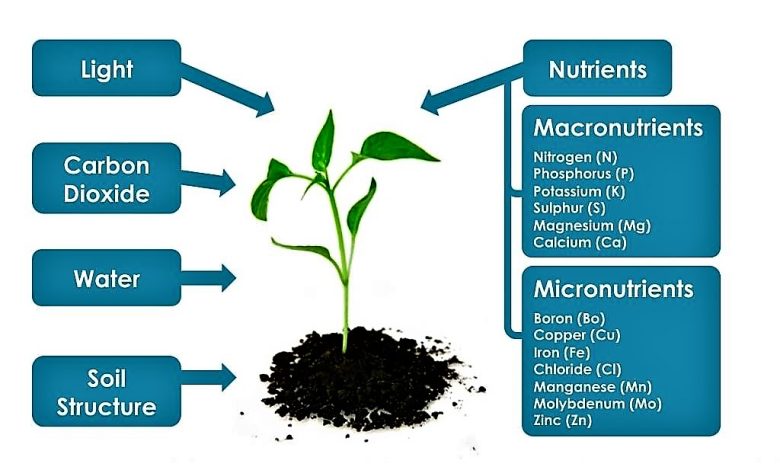
Hello farmers! In today’s article we will focus on the main nutrients that our plants need for their correct development. As you know, plants are made up of water (70-80%), organic molecules (20-25%) and mineral salts (2-3%). The mineral fraction, despite being the smallest, is essential.
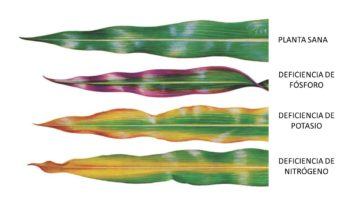
What types of nutrients do plants need?
Of all the elements that a plant can contain, only 16 are considered essential: C, H, O, N, P, K, S, Ca, Mg, Fe, Zn, Mn, Cu, Mo, B and Cl. In some species, Na, Si and Co (nitrogen-fixing legumes) are also considered essential. Mineral nutrients are distributed through the xylem throughout the plant thanks to the upward current flow generated by transpiration.
I found it interesting to discover that the roots absorb nutrients from one place or another depending on the type of nutrient it is. For example, calcium is absorbed at the apex (root tip) and the root hairs are the most active site of phosphate uptake.
What nutrient is my plant missing?
However, the availability of these nutrients can vary depending on various parameters such as soil, crop, environmental conditions, etc. I attached an image showing the availability of different nutrients depending on the pH (degree of acidity) of the soil. For example, potassium and sulfur are more available at higher pH (more alkaline). The opposite occurs with iron, increasing its availability at lower pH (more acidic).
The nutrient that is found in the smallest proportion will be the one that limits production, even though the rest are found in sufficient quantities. The role of soil organic matter should be highlighted, since it acts as a chelating substance and guarantees a better availability of nutrients in the soil.
Forms of presence of nutrients in the soil:
- Mobile: Nutrients are dissolved in the aqueous phase of the soil.
- Interchangeable: Adsorbed to the clay-humic complex
- Reserve (98%): Organic and inorganic
Sometimes, when deficiencies are detected, it is already too late to act.
Is there a lack of nitrogen in the plant?
Nitrogen is a fundamental nutrient that allows plants to grow with greater strength and vigor.
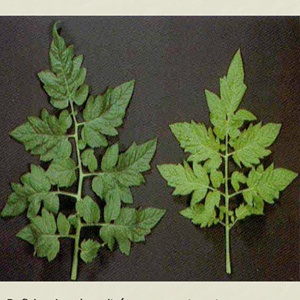
Deficiency symptoms:
- Less leaf area growth
- First affects the lower leaves (the oldest)
- Leaves turn yellowish, including the veins
- Prolongation of bud dormancy
Symptoms of excess:
- Exaggerated growth, intense green color
- Excessive absorption. Weak plants with very tender foliage and a small root system. Susceptible to overturning and attack by pests or diseases.
- little flowering
- Incomplete flowers (no stamens or pistils).
- It can cause the fall of flowers and fruits.
- It affects the absorption of other nutrients.
Phosphorus deficiency or excess
Phosphorus plays an important role in the energy metabolism of the plant. It is part of the nucleotides, phospholipids of cell membranes and some coenzymes. It has a high mobility in the plant and a low mobility in the soil.
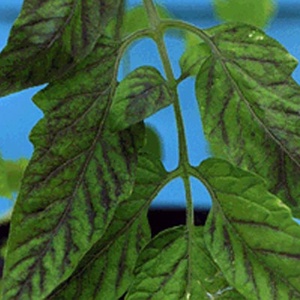
Deficiency symptoms:
- It mainly affects root development.
- Thinner stems and slower plant growth to dwarfism.
- Less flowering and fruit set
- Leaves bronzy red or purple that can become dry. Symptoms begin on lower leaves.
Symptoms of excess:
- If the nutrient is in excess, delayed absorption and translocation of some micronutrients may occur.
Fruit spots: lack of calcium?
Calcium is a nutrient required for elongation, cell division, structure and stability of membranes.
Deficiency symptoms:
- Young leaves become deformed (spoon-shaped) and curl towards the ground.
- Decreased root growth and lower amount of sugars.
- Areas of dead tissue in shoots and fruits.
- Example: Bitter Pitt in apple, blossom end rot in tomato and melon.
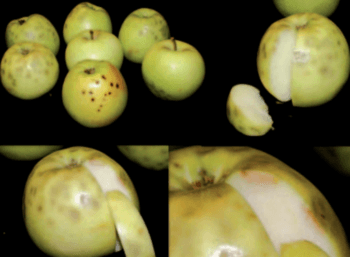
I leave you the link of an article where we talk about calcium deficiency in the garden.
Excess or lack of Potassium in plants
It is found in large quantities in all parts of the plant. It is important to activate some enzymes and improves the resistance of plants to cold and diseases.
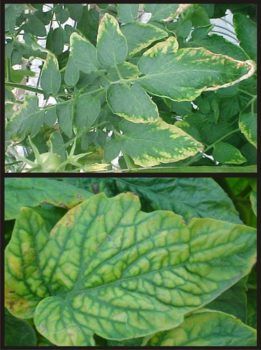
Main deficiency symptoms:
- If the deficiency is weak: thin stems.
- If the deficiency is acute: dwarf plants, few and small fruits.
- Reduced flowering.
- They are more susceptible to drought, cold and diseases.
References
- Erba, D., Casiraghi, C., Agustí, A., Cáceres, R., Marfà, O., Castellari, M. (2013).Nutritional value of tomatoes (Solanum lycopersicum L.) grown in greenhouse by different agronomic techniques. Journal of Food Composition and Analysis, 31(2), 245-251
- Greenwood, EAN (1976). Nitrogen Stress in Plants. Editor(s): NC Brady, Advances in Agronomy, Academic Press, 28, 1-35.
- Secco D, Whelan J, Rouached H, Lister R (2017). Nutrient stress-induced chromatin changes in plants. Current Opinion in Plant Biology, 39, 1-7.
I hope you liked the article and that, from now on, you pay attention to the symptoms of the plants since they can indicate that something is not right. You can tell us your experiences in the comments and give us tips to learn all together.
Have a nice day!

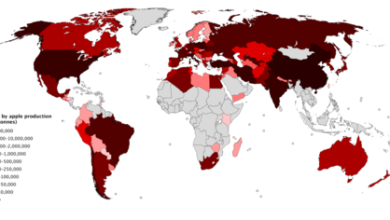
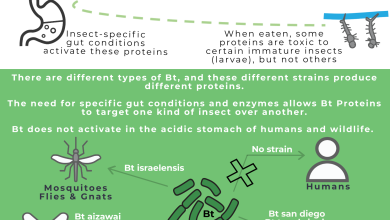
![Photo of Tipuana Tree: [Planting, Care, Irrigation, Pruning, Pests]](https://www.complete-gardening.com/wp-content/uploads/2022/08/tipuana-tree-planting-care-irrigation-pruning-pests-300x220.jpg)
